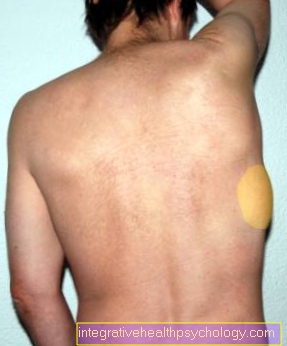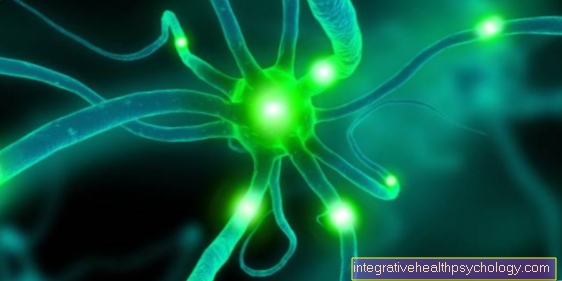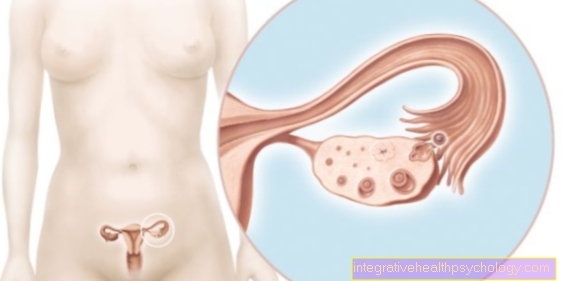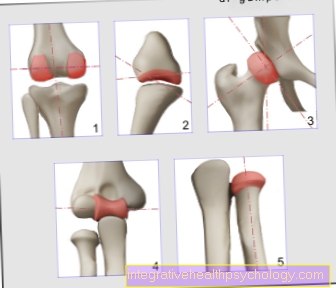Postmenopausal bleeding - these are the causes
What is postmenopausal bleeding?
There is no monthly bleeding after the menopause.
The menstrual period with rejection of the uterine lining as part of the fertile menstrual cycle no longer takes place.
If bleeding does occur after the menopause, the gynecologist should be consulted as a precaution.
Postmenopausal bleeding is bleeding that has nothing to do with a lack of fertilization of the eggs.
There are various possible causes of postmenopausal bleeding, ranging from harmless changes in the uterine lining to malignant changes in the tissue. Depending on the cause of the postmenopausal bleeding, the bleeding may be more or less severe and for a different period of time.

These are the causes
The causes of postmenopausal bleeding are often associated with changes in the lining of the uterus.
The hormone changes often break down the lining of the uterus, which can cause bleeding.
Occasionally, on the other hand, there is an overproduction of uterine lining.
Too high an estrogen level can lead to a thickening of the mucous membrane.
That too can cause bleeding.
With age, many women develop polyps or fibroids in the uterus.
These are benign tissue growths.
Polyps are mucosal growths and fibroids are growths of the muscles of the uterus.
Above a certain size, these benign tissue growths can also lead to postmenopausal bleeding of the uterus.
In addition, women may develop bleeding with hormone treatment.
Therapy with estrogen alone can lead to mild, harmless bleeding, while combination preparations made from estrogen and progestin cause period-like bleeding.
In addition to the harmless causes of postmenopausal bleeding mentioned above, the likelihood of malignant changes increases with age.
Cervical cancer is a possible cause of postmenopausal bleeding.
In order to find out the cause and initiate appropriate treatment, you should definitely see a gynecologist if you have bleeding after the menopause.
Can this be an indication of (cervical) cancer?
Bleeding after menopause can be an indication of a tumor, in addition to harmless causes, for example cervical cancer or uterine body cancer.
Cervical cancer causes practically no or unspecific symptoms in the early stages and can become symptomatic in the advanced stages through bleeding.
Cancer of the uterine body can also cause bleeding postmenopausally, usually in the early stages.
In order to rule out a malignant change in the uterus, a visit to the gynecologist is urgently recommended in the event of bleeding after the menopause.
If a tumor is present, it is important for the prognosis to treat it as early as possible.
Treatment of bleeding after menopause
Treatment for postmenopausal bleeding is determined by the cause of the bleeding.
Senile colpitis, an inflammation in postmenopausal women caused by a lack of estrogen, can be treated by treating the mucous membrane locally with the hormone estrogen.
If the postmenopausal bleeding is based on an increased level of estrogen, the proportion of estrogen can be reduced as part of an estrogen therapy to alleviate the symptoms.
If uterine fibroids are the cause of postmenopausal bleeding, different treatment options can be considered, depending on the location and size of the fibroids.
There are drug and surgical therapy options for fibroids.
Malignant changes in the uterus are treated depending on the size, location and other criteria.
Combined surgical procedures, radiation and chemotherapy are possible.
Duration and forecast
Depending on the cause of the postmenopausal bleeding, the duration and prognosis can vary widely.
The causes of such bleeding are often harmless.
Bleeding after the menopause can occur once or repeatedly, sometimes at irregular intervals.
Any postmenopausal bleeding requires a gynecological examination.
With fibroids or polyps, the bleeding usually subsides after appropriate treatment.
If the bleeding is caused by a malignant uterine tumor, the prognosis depends on the stage of the tumor.
The earlier a tumor of the uterine lining is diagnosed and treated, the better the prognosis.
Other possible accompanying symptoms
In the case of bleeding after menopause, which is caused by changes in the mucous membrane and atrophy, additional symptoms may include vaginal dryness, discharge and itching in the vagina.
One speaks here of a vaginitis senilis, an inflammation of postmenopausal women, which is based on a lack of estrogen.
Overproduction of uterine lining or hormone therapy that causes bleeding can cause accompanying symptoms associated with increased estrogen levels.
The mucous membranes become thicker, give off secretions, the breasts and bones are built up and tissue increases.
Benign growths such as polyps or uterine fibroids can cause other symptoms in addition to bleeding, depending on their size.
Large fibroids in particular can cause pain and displace other organs in the uterus due to their size.
A uterine myomatosus can cause digestive problems such as constipation and urination problems.
Malignant changes such as cervical cancer or uterine body cancer can cause discharge, pain, discomfort when using the toilet and urination and cause lymphedema (water retention in the lymphs) and congestive kidneys (urinary backlog in the urinary tract).
This is how the diagnosis is made
Since bleeding after menopause can have various causes, a thorough diagnosis is important.
First of all, it is important to describe existing symptoms to the gynecologist in detail.
In addition to the gynecological palpation examination and examination with a speculum, a transvaginal ultrasound examination can be helpful to examine the uterine lining.
The attending physician then decides individually whether further diagnostic measures are necessary.





























